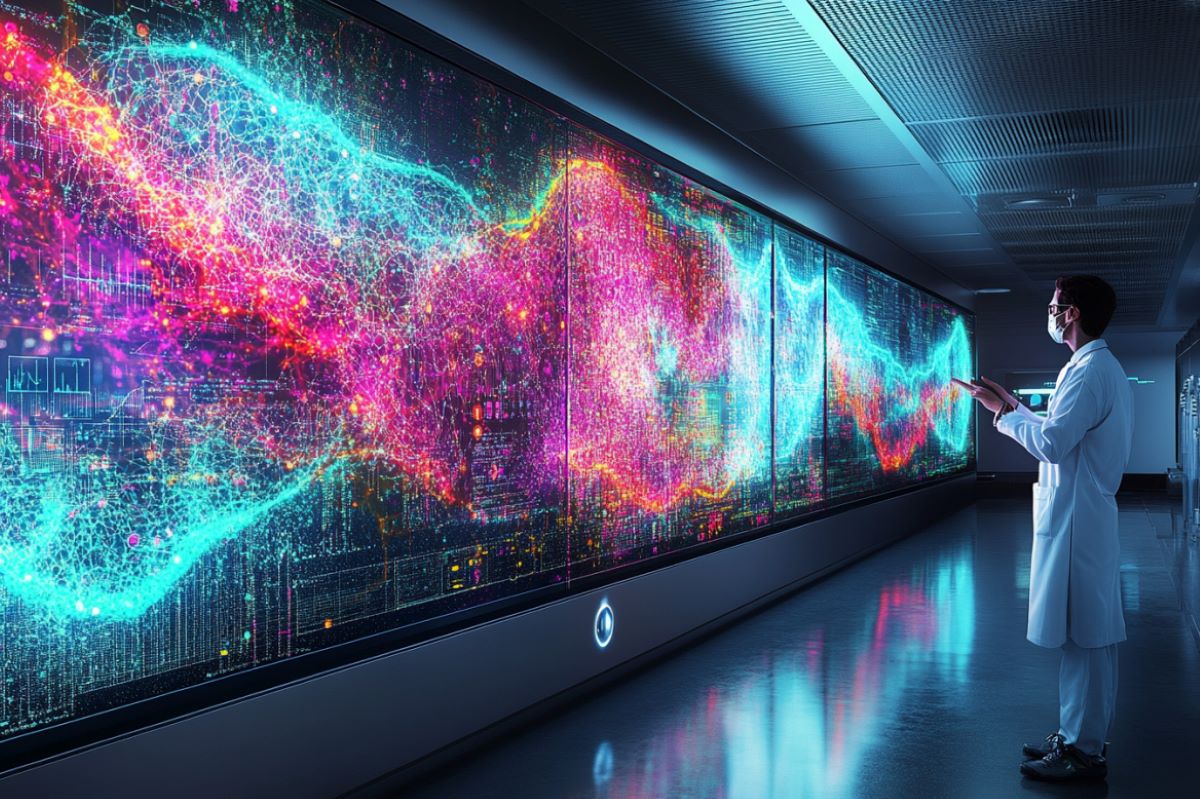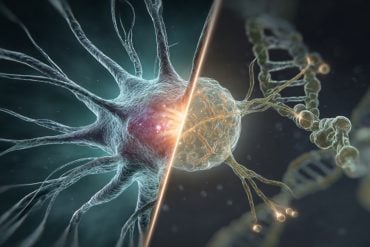Summary: A deep learning AI model developed by researchers significantly accelerates the detection of pathology in animal and human tissue images, surpassing human accuracy in some cases. This AI, trained on high-resolution images from past studies, quickly identifies signs of diseases like cancer that typically take hours for pathologists to detect.
By analyzing gigapixel images with advanced neural networks, the model achieves results in weeks instead of months, revolutionizing research and diagnostic processes. The tool is already aiding disease research in animals and holds transformative potential for human medical diagnostics, particularly for cancer and gene-related illnesses.
Key Facts:
- The AI model identifies disease in tissue images faster and more accurately than humans.
- It reduces analysis times from months to weeks, particularly in large-scale studies.
- The model handles gigapixel images by analyzing smaller tiles in their broader context.
Source: Washington State University
A “deep learning” artificial intelligence model developed at Washington State University can identify pathology, or signs of disease, in images of animal and human tissue much faster, and often more accurately, than people.
The development, detailed in Scientific Reports, could dramatically speed up the pace of disease-related research. It also holds potential for improved medical diagnosis, such as detecting cancer from a biopsy image in a matter of minutes, a process that typically takes a human pathologist several hours.
“This AI-based deep learning program was very, very accurate at looking at these tissues,” said Michael Skinner, a WSU biologist and co-corresponding author on the paper. “It could revolutionize this type of medicine for both animals and humans, essentially better facilitating these kinds of analysis.”

To develop the AI model, computer scientists Colin Greeley, a former WSU graduate student, and his advising professor Lawrence Holder trained it using images from past epigenetic studies conducted by Skinner’s laboratory.
These studies involved molecular-level signs of disease in kidney, testes, ovarian and prostate tissues from rats and mice. The researchers then tested the AI with images from other studies, including studies identifying breast cancer and lymph node metastasis.
The researchers found that the new AI deep learning model not only correctly identified pathologies quickly but did so faster than previous models – and in some cases found instances that a trained human team had missed.
“I think we now have a way to identify disease and tissue that is faster and more accurate than humans,” said Holder, a co-corresponding author on the study.
Traditionally, this type of analysis required painstaking work by teams of specially trained people who examine and annotate tissue slides using a microscope—often checking each other’s work to reduce human error.
In Skinner’s research on epigenetics, which involves studying changes to molecular processes that influence gene behavior without changing the DNA itself, this analysis could take a year or even more for large studies.
Now with the new AI deep learning model, they can get the same data within a couple weeks, Skinner said.
Deep learning is an AI method that attempts to mimic the human brain, a method that goes beyond traditional machine learning, Holder said. Instead, a deep learning model is structured with a network of neurons and synapses.
If the model makes a mistake, it “learns” from it, using a process called backpropagation, making a bunch of changes throughout its network to fix the error, so it will not repeat it.
The research team designed the WSU deep learning model to handle extremely high-resolution, gigapixel images, meaning they contain billions of pixels.
To deal with the large file sizes of these images, which can slow down even the best computer, the researchers designed the AI model to look at smaller, individual tiles but still place them in context of larger sections but in lower resolution, a process that acts sort of like zooming in and out on a microscope.
This deep learning model is already attracting other researchers, and Holder’s team is currently collaborating with WSU veterinary medicine researchers on diagnosing disease in deer and elk tissue samples.
The authors also point to the model’s potential for improving research and diagnosis in humans particularly for cancer and other gene-related diseases. As long as there is data, such as annotated images identifying cancer in tissues, researchers could train the AI model to do that work, Holder said.
“The network that we’ve designed is state-of-the-art,” Holder said. “We did comparisons to several other systems and other data sets for this paper, and it beat them all.”
Funding: This study received support from the John Templeton Foundation. Eric Nilsson, a WSU research assistant professor in the School of Biological Sciences, is also a co-author on this paper.
About this AI research news
Author: Sara Zaske
Source: Washington State University
Contact: Sara Zaske – Washington State University
Image: The image is credited to Neuroscience News
Original Research: Open access.
“Scalable deep learning artificial intelligence histopathology slide analysis and validation” by Michael Skinner et al. Scientific Reports
Abstract
Scalable deep learning artificial intelligence histopathology slide analysis and validation
Deep learning involves an artificial intelligence (AI) approach and has been shown to provide superior performance for automating image recognition tasks, as well as exceeding human capabilities in both time and accuracy.
Histopathology diagnostics is one of the more popular challenges at the intersection of artificial intelligence, computer vision, and medicine.
Developing methods to automatically detect and identify pathologies in digitized histology slides imposes unique challenges due to the large size of these images and the complexity of the features present in biological tissue.
Most methods that are capable of human-level recognition in histopathology are tuned to a specific problem since the computational complexity exceeds that of traditional image classification problems.
In the current study, a deep learning approach is developed and presented that can be trained to locate and accurately classify different types of pathologies in gigapixel digitized histology slides along with completing the binary disease classification for the entire image.
The approach uses a novel pyramid tiling approach to take advantage of spatial awareness around the area to be classified, while maintaining efficiency and scalability for gigapixel images.
The approach is trained and validated on a wide variety of tissue types (i.e., testis, ovary, prostate, kidney) and pathologies taken from an epigenetically altered histology study at Washington State University.
The newly developed procedure was optimized and validated along with comparison and validation on public histology datasets.
The current developed procedure was found to be optimal and more reproducible when compared to manual procedures, and optimal to previous protocols that used fragmented tissue or slide analysis.
Observations demonstrate that the deep learning histopathology analysis is significantly more efficient and accurate than standard manual histopathology analysis.






